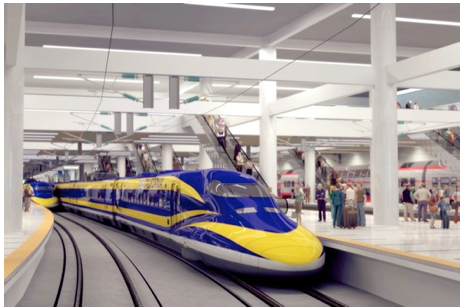CommentsPERSPECTIVE-Apparently the California High Speed Rail Authority does. Dionne Warwick knows, too, as memorialized by her hit song. But the only music CHSRA chair Dan Richards hears is his own whistling in the dark as he considers the odds against the system’s completion.
The change to give the Northern California terminus priority over Burbank, while designed to deliver an operating segment in a high density corridor sooner than later in hopes of attracting private funding, does not cure the core problem facing the system: very poor prospects for funding the completion of the entire project.
A commuter rail segment serving a specific metro area might make sense from a local transportation planning aspect, but that is not what the voters thought they were approving when they passed Proposition 1A in 2008. They assumed the goal was a complete system serving most of the state.
Former CHSRA Chair and Superior Court Judge Quentin Kopp was quoted in the LA Times:
“This project is nonexistent. There is no private investment. So what they are doing is just whistling Dixie and somehow hoping the public can be fooled. It is over except for the waste of taxpayer money.”
Kopp also emphasized that the project has substantially deteriorated since its passage.
“What they have done in effect is destroy my intentions and those of the voters of California.”
Would you put money down on the construction of a new home if you were uncertain of financing?
You would be throwing your money away.
Likewise, starting construction on any portion of HSR, anywhere – north, south or central – with no external financing in sight beyond the state’s cap and trade funds (which will have to be renewed by the legislature in a political climate that is becoming increasingly skeptical of the deliverables) is reckless at best and likely amounts to misappropriation of taxpayer funds.
The construction plan is counting on at least 50% of its funding from the federal government.
Fat chance. Congress has already stated its opposition to any additional financial assistance beyond the $3.5 billion initial grant, which is also in jeopardy.
There is no interest from the private sector, not that I would expect any at this stage, but making a compelling case for a positive net cash flow from operations for a system that may only be minimally operational by 2025 is a long shot. Confidence in any projection by CHSRA will be suspect in view of the gross understatement of the construction costs used in the promotion of 1A. The Authority made a big deal over revising the estimate down the other day – from $68 billion to $64 billion – but did not frame it in the context of the original projection of $38 billion. A minor oversight.
The provisions of Proposition 1A forbid government operating subsidies in the event of negative cash flows. That will be sure to scare off investors who will depend on a positive margin to assure repayment of the bonds they purchase. It could put the State in a Catch 22. Taxpayers would have to fund the debt service, which would violate the no-subsidy covenant.
Leading European firms with HSR infrastructure development and management experience have expressed strong reservations over the prospects for a positive operating margin. According to a statement made by Spanish company Ferrovial SA, cited by the LA Times:
“We believe it is highly unlikely that the [California system] will turn an operating profit within the first 10 years of operation. More likely, [the system] will require large government subsidies for years to come.”
The CHSRA will continue to ignore common sense, not to mention the stipulations of Proposition 1A itself, and create a modern day version of “The Wreck of the 97” (by the way, this song was the inspiration for the Kingston Trio’s classic hit, “The MTA”). But it won’t be the poor engineer who suffers. The citizens and stakeholders of California will be stuck with the tab for a fragmented “system” that delivers way less than was promised, at a much higher cost.
(Paul Hatfield is a CPA and serves as President of the Valley Village Homeowners Association. He blogs at Village to Village and contributes to CityWatch. The views presented are those of Mr. Hatfield and his alone and do not represent the opinions of Valley Village Homeowners Association or CityWatch. He can be reached at: [email protected].) Edited for CityWatch by Linda Abrams.
















